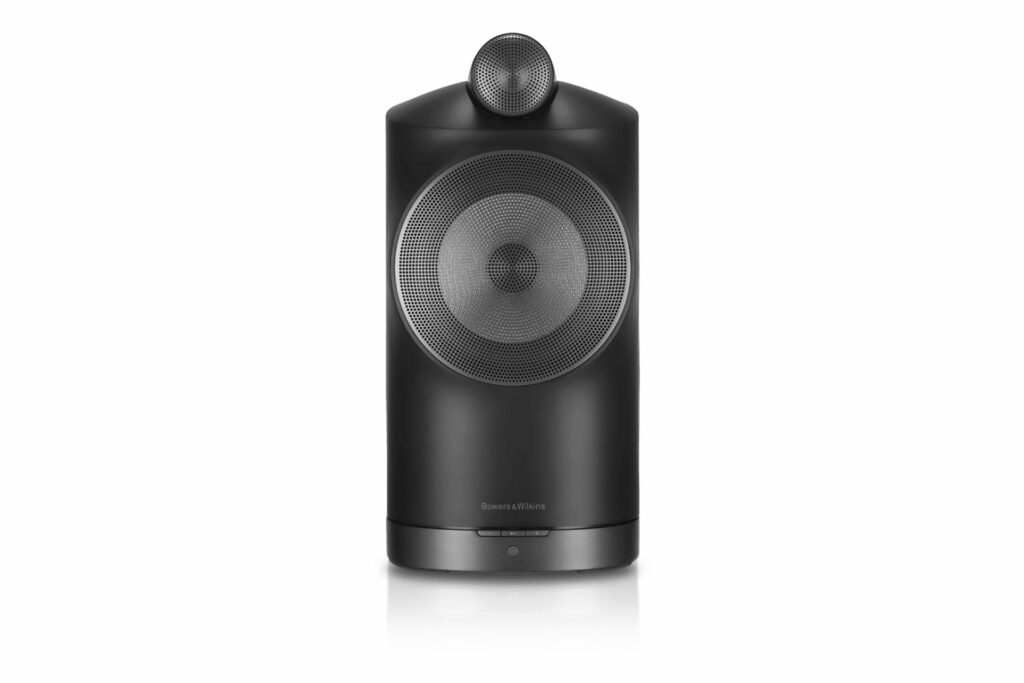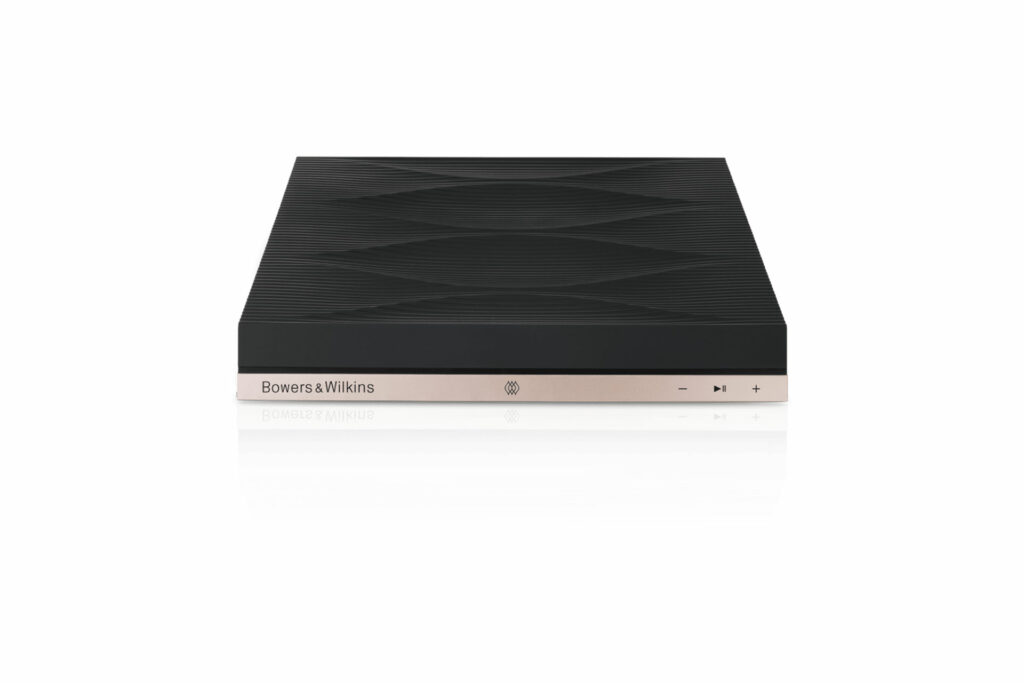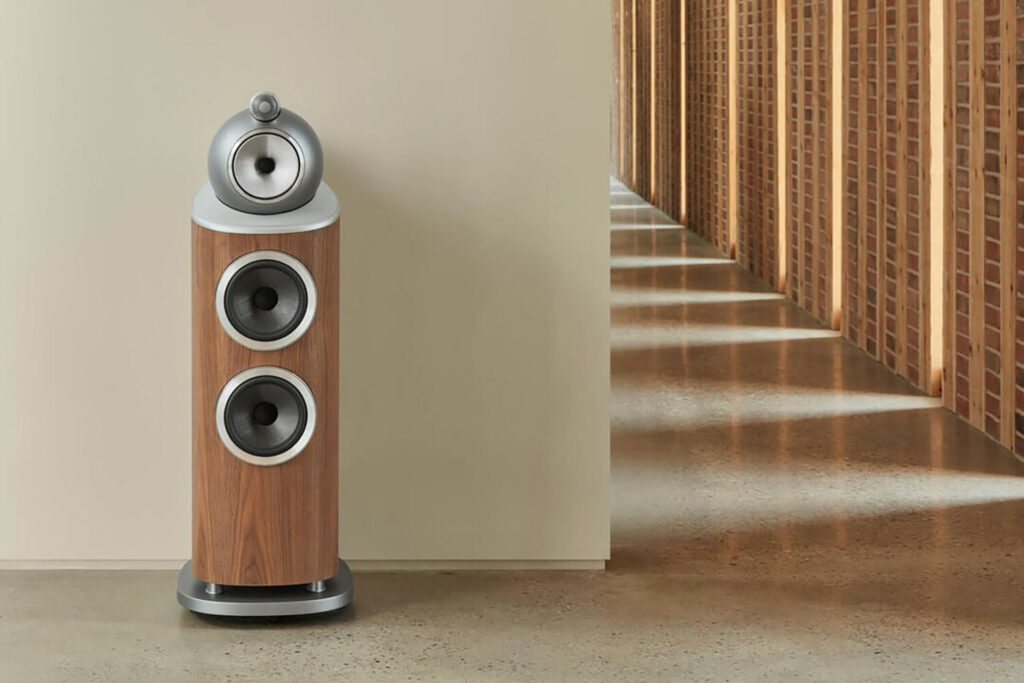There are a lot of back stories that don’t get told in the audiophile press for mainstream consumers. Often, these stories are pretty incredible. The back story of how Krell was almost sold is a recent one that ended in a total disaster. The real story behind the Mobile Fidelity LP version of Thriller is another one that is pretty salacious. How Noel Lee came up with the idea for Beats but lost control is yet another one for the all-time list of craziest audiophile stories.
Today’s story is told by an insider who illustrates how Bowers & Wilkins speakers, a staid British audiophile speaker company, nearly became the next Sonos.
Gideon Yu is a Silicon Valley icon with a track record that makes him a multi-billionaire, when there are actually only about 1,000 billionaires in the entire United States, and reportedly about 2,850 in the world (out of 8,100,000,000 people on the planet). He was an investor and/or involved with some little tech start-ups such as Facebook, YouTube.com and, with his buddy David Lee, Mr. Yu was involved with credit card company and tech start-up Square. Basically, Mr. Yu couldn’t miss. The boys on Sand Hill (where the money comes from in Silicon Valley) were in love with Gideon Yu and willing to give him lots of money. His success in tech led him to a leading role as one of the owners of the National Football League’s San Francisco 49ers.

So Why Would a Tech Start-Up Need the Bowers & Wilkins Speaker Brand?
Now this is the operative question. Why would a tech start-up need a conservative, accountant-owned, U.K.-based speaker company to launch a new venture? The idea behind Formation was to use Bowers & Wilkins as the brand and Formation as the class of speakers that could bring the magic of Sonos to the world in a much higher-performance product. By higher performance, they were talking about making their own, better MESH network (that’s how Sonos works – on its own network) that didn’t just have HD audio (think: 24/192 streaming), but also a much more complicated trick, which was going to be streaming, wireless 4K video. Sonos can’t do that to this day.
The products that Eva was looking at making actually got made in the Bowers & Wilkins lineup during the time when Eva Audio owned the loudspeaker brand. In fact, our insider told us some of the products, like the powered speakers, were under development before Eva paid a reported $150,000,000 for Bowers & Wilkins. The idea behind the wireless connectivity was based around a box that was to be located in each room and would deliver full audio and video HD connectivity to the end user. They had a user interface that was supposedly very impressive and specifically easy for the consumer to set up. It has an intuitive (note: this was before the mainstream launch of AI) way of recognizing new sources and components, and was very easy for the end user to set up, which is yet another Sonos characteristic.

Where Did Things Go Wrong with the Formation Concept?
First of all, Eva was late to the game, as Sonos has basically been able to take the lion’s share of the market in the streaming audio world. Because of Sonos, the custom installation world has adopted them as the whole-home distributed audio solution of choice. Formation was behind the curve.
The next problem was cost. To be so much more high-performance, each box on the Formation MESH network was going to cost a whopping $5,000 each. That’s nearly 10 times what a Sonos solution would cost in terms of overall system backbone. Even Apple doesn’t sell products that are tenfold more expensive than the competition, as that is quite limiting in terms of the overall audience.
4K video, via a wireless connection, sounds sexy as hell when you say it out loud. Making such a high-bandwidth system actually work is a whole other challenge. To get to market, Eva scaled back the resolution of the video to 1K from 4K, which makes things a lot easier on the network, but takes a good selling point away from the product.
Time equals money and, as the development process dragged on, Eva needed to raise more and more money from tech-savvy investors. The company was becoming quite in debt with products that were too expensive. Traditional audiophile speakers were still selling, but Eva’s focus was very much on this new Sonos killer – not selling Bowers & Wilkins 702s or Bowers & Wilkins 606s. Sales slumped a little, which didn’t help matters one bit.

How Did the Formation Experiment End?
The reality of delivering 4K video to the masses was too hard and too expensive. $5,000 per room is too expensive, but in order to possibly make the product function, Eva needed solidly nine figures of investment to make 4K video work in their business model. That is a shitload of money, even for a tech CEO with a beyond-proven track record and access to premium and willing investors. Eventually, investors want to see a return on their money, and that was looking less and less likely as time went on
Audiophiles, who Bowers & Wilkins appeal to at their core, are not as enthusiastic about wireless performance as younger, more bleeding-edge, tech-savvy consumers. Formation has their latency down, so that the delay for audio on their speakers was actually less than on a pair of physical speaker cables. That’s incredible, with wireless performance beating wired performance. Simply put, that rarely happens, but the core Bowers & Wilkins client didn’t see things that way. They liked wired AV and wired speakers just fine.
Being first to market has big advantages, and Sonos was first to market. Really, they had become dominant as their products evolved and become more and more diverse, as well as appealing: Wireless subwoofers, strong performing soundbars. Eventually, Sonos even came out with headphones. And everything worked very well in their MESH network. Eva had some patents that would allow them to deliver better performance, but Sonos was so out ahead of the curve that it didn’t really ever make any sense.
Final Thoughts About Eva Audio Owning Bowers & Wilkins Speakers …
This was one of the most ambitious projects ever taken on in the history of high-performance audio/video and/or consumer electronics. It also failed. The ambition was admirable, but the reality was a non-functional product that was getting more and more expensive to develop.
Eventually, the day came where the project needed to be ended. This was right about the time that an audiophile-loving healthcare CEO at Masimo in Irvine, California had just invested $1,000,000,000 on Sound United, which at the time included Denon, Marantz, Definitive Technology and Polk Audio. Despite some serious overlap in products across multiple speaker brands, the Masimo CEO decided to pick up the legendary Bowers & Wilkins brand for pennies on the dollar. His main goal was to get HEOS technology for cross-platform technology connectivity – specifically for his health-oriented smart watch. Could he have just licensed HEOS for a lot less money? Yes, absolutely he could have. However, when Apple “stole” some key technologies for the watch, Masimo ended up winning the biggest “David versus Goliath” tech lawsuit in global history. While Apple has yet to pay up (appeals process), they are looking at a huge, multi-multibillion dollar payout to Masimo. Get this: the investors at Masimo, who will eventually benefit from the Apple case after all of the appeals are done, revolted against the CEO. Now Masimo has Bowers & Wilkins and all of the Sound United brands up for sale. They’ve grossly mismanaged the brands in 2024, with sales that are way less than their pandemic-era booming numbers. Masimo’s CEO seemingly has until the end of the year to get rid of his AV brands, or he is likely going to get tossed. This is yet another disaster that somehow doesn’t seem to affect Bowers & Wilkins too much. They still have 102 engineers in England, and they are making great products, including the Bowers & Wilkins 802 D4s, which I have in my living room right now.
The lesson learned in the Eva/Formation project was from the Pigs Get Fat – Hogs Get Slaughtered school of thought. And while it is easy to second-guess a project with this kind of aggressive scope, without the big swing for the fences, you wouldn’t have the Facebooks, YouTube.coms and and Squares of the world. You have to take big risks to have big successes. Sadly, this project wasn’t able to work out, but it came pretty close to being a reality.
It feels like Bowers & Wilkins is a likely candidate to be spun off from Masimo’s Sound United portfolio, but who knows at this point. Time will tell if the next owner will “stay in their lane” or if they are going to try to do something radical with this legendary audiophile brand.
Did you know the story of Eva, Formation and Bowers & Wilkins? Who do you think will (or should) buy Bowers & Wilkins? Post your thoughts below and we will get your comments live ASAP.



